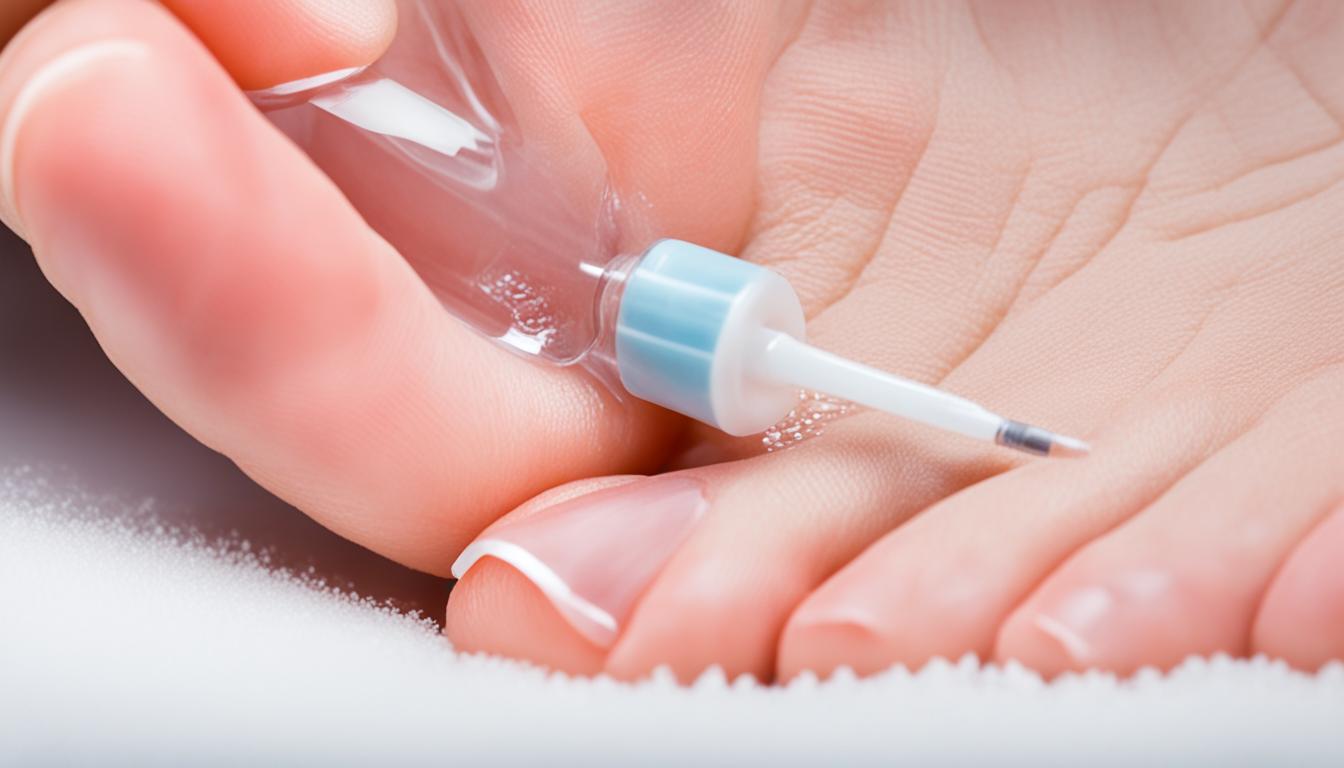Identifying unhealthy nail care habits is crucial for spotting issues in your client's routines. Nail biting can harm nail beds, cause misshapen nails, and raise infection risks linked to stress or anxiety. Cuticle picking risks infections, irregular growth, and dry cuticles. Improper trimming can lead to ingrown nails and pain. Harsh chemicals like acetone may weaken nails. Look for signs of damage like discoloration, peeling, or pain to prevent further harm. Educate on proper care to maintain healthy nails. Understand potential infections from expired products or unclean tools. Recognize weakened nail beds by changes in color or texture.
Key Takeaways
- Discoloration, brittleness, peeling indicate nail damage.
- Sharing tools spreads infections; expired products harbor bacteria.
- Weak, brittle nails, white spots signal nail bed issues.
- Pain, swelling around nails can indicate infection.
- Yellowing, ridges, changes in texture require attention.
Nail Biting and Its Consequences
Regularly biting your nails can lead to various negative consequences for your nail health and overall well-being. Nail biting, also known as onychophagia, can result in damaged nail beds, infections, and pain. This habit may cause misshapen nails, increase the risk of bacterial or fungal infections, and slow down nail growth.
The connection between nail biting and stress, anxiety, boredom, or lack of awareness is well-documented. When you repeatedly bite your nails, you weaken them, making them more susceptible to breakage and other issues.
To prevent these consequences, it's essential to address the root causes of your nail-biting habit. Developing awareness of triggers, such as stress or anxiety, and making behavioral changes can help break the cycle. Seeking professional help or interventions if needed is also crucial.
Cuticle Picking Dangers

Picking at your cuticles can have detrimental effects on your nail health, leading to infections, inflammation, and damage to the nail bed. When you engage in this habit, you put yourself at risk of developing dry, cracked, and bleeding cuticles. Here's why you should avoid cuticle picking:
- Increased Risk of Infections: By disrupting the protective barrier around your nails, you make it easier for bacteria and fungi to invade, potentially causing bacterial and fungal infections.
- Uneven Nail Growth: Constantly picking at your cuticles can lead to irregular nail growth patterns, resulting in nails that are misshapen and uneven.
- Nail Bed Damage: The nail bed can suffer damage from the trauma of cuticle picking, affecting the overall health and appearance of your nails.
To maintain healthy cuticles and nails, consider using cuticle oil and seeking professional manicure services. Your nails will thank you!
Improper Nail Trimming Risks

Improper nail trimming practices can pose significant risks to your nail health, including the potential for ingrown nails, infections, and discomfort. When nails are cut incorrectly, such as being trimmed too short or at an angle, it can lead to nail damage and pain. Using the wrong tools or ones that are dull may result in jagged edges and uneven nails, further exacerbating the issue. To avoid these complications, it is essential to educate yourself on proper nail trimming techniques. By incorporating regular maintenance and ensuring you trim your nails correctly, you can promote healthy nail growth and prevent future problems. Below is a table summarizing the risks associated with improper nail trimming and the importance of adopting proper nail care routines and client education:
| Risks of Improper Nail Trimming | Importance of Proper Trimming | Benefits of Healthy Nail Growth |
|---|---|---|
| Ingrown Nails | Preventing Complications | Avoiding Discomfort |
| Nail Damage | Client Education | Promoting Healthy Nails |
| Infections | Nail Care Routines | Preventing Future Issues |
Harsh Chemical Usage Effects

Using nail care products with harsh chemicals can put your nails at risk of damage, dryness, and weakness. Overexposure to acetone-based removers may leave your nails brittle by stripping away natural oils.
Be mindful of formaldehyde, toluene, and DBP in nail products, as they can lead to discoloration and irritation, affecting the health of your nails.
Chemical Damage Risks
To minimize the risk of chemical damage to your nails from harsh nail products, prioritize using formulations with gentler ingredients. When it comes to your nail care routine, being mindful of the products you use can make a significant difference in the health of your nails. Here are some key points to keep in mind:
- Choose nail products free from acetone, formaldehyde, and toluene: These harsh chemicals are known to weaken nails and cause damage over time, leading to issues like nail thinning and peeling.
- Limit prolonged exposure to damaging chemicals: Continuous use of products containing these harmful ingredients can result in dry, brittle, and discolored nails, making them more prone to breakage.
- Opt for safer formulations: Educate yourself on nail products that are formulated with milder ingredients to prevent long-term nail health problems. Prioritizing nail care products that are gentle on your nails can help maintain their strength and well-being.
Health Implications Concerns
Harsh chemicals in nail products can have detrimental effects on your overall nail health, leading to issues such as dryness, weakening, and potential allergic reactions. Nail care is essential, and unhealthy habits like excessive chemical exposure can result in brittle nails and nail bed weakening.
Chemical-based nail enhancements, such as acrylics and gels, may seem appealing, but they can weaken your nails over time, making them more prone to infections. Additionally, prolonged exposure to chemicals like formaldehyde, toluene, and DBP can cause allergic reactions and skin irritation, affecting not just your nails but also your skin health.
To prevent these health implications, it's vital to promote healthy habits in your nail care routine. Educating yourself on the harmful effects of harsh chemicals in nail care products and opting for more natural and nourishing alternatives can help maintain the health and strength of your nails in the long run.
Prioritize your nail health by being mindful of the products you use and the potential risks they pose. When getting manicures and pedicures, opt for nail salons that prioritize cleanliness and use sterilized equipment. Additionally, consider using natural and non-toxic nail polishes and removers to reduce the exposure to harmful chemicals. It is also important to take breaks from frequent nail treatments to allow your nails to breathe and recover. For more nail health and wellbeing tips for stylists, consult with a dermatologist or nail care specialist to ensure that you are taking the best care of your nails and overall wellbeing.
Sensitivity and Reactions
Exposure to harsh chemicals in nail products can trigger allergic reactions and sensitivities, impacting both your nail health and skin condition. When dealing with nail products containing formaldehyde, toluene, or dibutyl phthalate, be aware of the potential risks they pose to your nails and skin.
Here's what you should know:
- Nail Damage: Harsh chemicals can weaken your nails, leading to brittleness and breakage.
- Skin Reactions: Symptoms of chemical sensitivity may include redness, itching, swelling, and peeling of the skin around your nails.
- Non-Toxic Alternatives: Educating yourself about gentle, non-toxic alternatives can help prevent adverse reactions and maintain healthy nails in the long run.
Nail Damage Indicators

When evaluating nail health, keep an eye out for signs of damage such as discoloration, brittleness, or peeling in your nails. These indicators can be early warnings of unhealthy habits in your nail care routine. Additionally, watch out for yellowing or ridges on your nails, as they can also signify issues with nail health. Changes in texture, shape, or thickness of your nails should not be overlooked, as they may point to underlying problems that need attention. Pain, swelling, or signs of infection around the nails are red flags that could be linked to poor nail care practices. To help prevent and address nail damage indicators, it's important to educate yourself on proper nail care techniques. Below is a table summarizing some common nail damage indicators to be mindful of:
| Nail Damage Indicators | |
|---|---|
| Discoloration | Yellowing |
| Brittleness | Peeling |
| Ridges | Infection |
Infections From Unhealthy Habits

Neglecting proper hygiene practices in nail care can result in infections caused by bacteria and fungi. To prevent such issues, it's essential to be aware of the unhealthy habits that may lead to infections:
- Sharing nail tools: Sharing tools without proper disinfection increases the risk of bacterial and fungal infections, as the germs can easily transfer between users.
- Using expired products: Using nail products beyond their expiration date can harbor harmful bacteria, leading to infections when applied to the nails or skin.
- Incorrect nail trimming: Cutting nails too short or trimming them improperly can cause ingrown nails, creating openings for bacteria and fungi to cause infections.
Weakened Nail Bed Signs

Signs of a weakened nail bed manifest through indicators like thin, brittle nails and discoloration. If your nails feel weak and easily break or split, this could be a sign that your nail bed isn't as important as it should be.
Keep an eye out for any yellowing or white spots on your nail bed, as these discolorations can signal underlying issues that need attention. Additionally, if you notice pitting or dents on the surface of your nails, it might be a red flag for a weakened nail bed.
Pay close attention to any pain or sensitivity in your nail bed area, as this could indicate damage or infection that needs to be addressed promptly. Remember, in severe cases, a weakened nail bed can lead to nail deformities or irregular growth patterns, so it's essential to take care of your nail health to prevent such outcomes.
Frequently Asked Questions
How Do You Know if Your Nails Are Unhealthy?
To know if your nails are unhealthy, watch out for:
- Discoloration, brittleness, or odd growth patterns.
- Signs like infections, pain, or swelling around your nails can indicate problems.
If proper care doesn't fix persistent nail issues, it might signal underlying health concerns. Keep an eye on changes in texture, thickness, or shape, as they could point to nail health problems.
Regularly check your nails and seek professional advice for any ongoing issues.
What Problems Can Occur During a Nail Care Service?
During a nail care service, problems can arise if tools aren't properly sanitized, leading to infections.
Over-exfoliating your nails or cuticles can weaken them, causing breakage.
Allergic reactions to nail products like acrylics might result in skin irritation.
Ignoring nail issues like discoloration or unusual growth patterns can worsen untreated conditions.
It's essential to pay attention to these signs to avoid pain, infections, and other complications during your nail care routine.
What Are the Five Common Nail Problems?
When it comes to nail problems, you might encounter:
- Nail fungus, also known as onychomycosis, can be tough to treat.
- Ingrown toenails cause discomfort as the nail grows into the skin.
- Brittle nails may result from aging, exposure to water/chemicals, or dietary deficiencies.
- Yellow nails could hint at an infection or product reaction, indicating the need for proper care and treatment.
How Could You Identify a Nail Disorder?
To identify a nail disorder, start by examining for discoloration, changes in texture, or odd growth patterns.
Watch for symptoms like pain, swelling, or tenderness around the nails.
Consider signs of infection, brittle nails, or peeling issues.
Note thickness, nail bed separation, or unusual shapes.
If you spot recurring problems or significant changes, seek professional advice promptly.
Your nail health matters, so stay vigilant and address any concerns promptly.
Conclusion
In the world of nail care, it's important to recognize unhealthy habits before they take a toll on your nails. Just like a garden needs proper care to flourish, your nails need attention and love to thrive.
So, take the time to break those bad habits, nourish your nails, and watch them blossom into beautiful, healthy works of art. Remember, healthy nails are happy nails!









